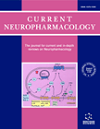
Full text loading...
Co-occurrence of substance use disorders is frequent in patients with mental health disorders is a condition known as “dual diagnosis”. The use of substances worsens the prognosis and lowers the quality of life of psychiatric patients. It also increases the risk of hospitalization and suicide rate.
To assess the effects of aripiprazole therapy on substance use and other psychiatric outcomes in dually diagnosed patients.
We performed a systematic review conducted on 3 databases PUBMED, SCOPUS, and Web of Science, selecting original studies and analyzing the impact of aripiprazole therapy on dually diagnosed patients. Six hundred and fifty-five articles were founded and, after removing duplicates (n = 274) and applying the exclusion criteria, 12 articles were included in our systematic review.
12 studies were included, among which 6 were Randomized Controlled Trials. The Most frequent psychiatric diagnosis were schizoaffective disorders, schizophrenia, and bipolar disorders. Alcohol and cocaine use disorders were the most used substances. Eleven studies showed a clinical improvement after aripiprazole treatment. 8 studies evaluated craving and found a significant reduction after treatment with aripiprazole. No definitive conclusions can be drawn on substance usage and maintenance of abstinence.
The present findings suggest aripiprazole may be associated with reducing substance craving and improving depression, psychosis, and schizoaffective disorders in dually diagnosed patients.

Article metrics loading...

Full text loading...
References


Data & Media loading...

